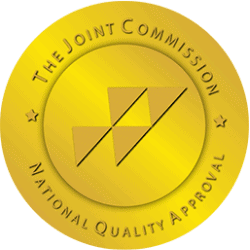What may start out as simply taking a medication for a cough can turn into a full-blown addiction. Dextromethorphan (DXM) is in several over-the-counter cough and cold meds. Because of this, many people believe it’s a safe product to take. In fact, in most cases it is. However, some people go on to become addicted to it. Then, they find they have trouble quitting DXM. As a consequence, they will need professional medical help to stop using the drug.
What Is Dextromethorphan (DXM)?
DXM is a synthetic drug. Its purpose is to suppress coughs that come with a cold, the flu, and other illnesses. In addition, it can help ease pain associated with an ongoing cough. DXM helps relieve not just a cough. It can also provide relief for other cold symptoms, such as congestion, watery eyes, and a runny nose. However, it does not treat the actual cause of the cough.
Consequently, a person may continue using DXM because they have not yet cured the cause of their cough. As a result of long-term usage, addiction may set in. Quitting DXM needs to be done under the supervision of medical experts.
DXM can be taken in several forms. These include capsules, tablets, liquid, and dissolving strips. It is usually taken every four to twelve hours as needed. Some common brand names for DXM products include:
- Benylin DM
- Bronchopan
- Delsym
- Novahistex DM
- Nyquil
- Robitussin
- Sucrets
DXM is also known by street names. These include dex, poor man’s ecstasy, sky, syrup, and velvet.
DXM Abuse and Addiction
DXM is often sold as the sole medication in a product. Alternatively, it can be combined with other meds, including antihistamines, cough suppressants, and decongestants. However, it can be dangerous when too many drugs are combined. Some people who use or abuse DXM combine it with other drugs. The combination of the active ingredients in them can cause an overdose.
When someone uses DXM in high doses, they may experience psychedelic effects. They can be similar to those that occur when using drugs like MDMA and acid. As a result, some people use DXM as a recreational drug. Additionally, they may use it with other drugs or alcohol. That being the case, they increase their risk of health problems and overdosing. Under those circumstances, many people have crossed the line into addiction. Consequently, they need to go to rehab for quitting DXM.
People of any age can develop an addiction to DXM. Having said that, teenagers run a high risk of experimenting with it. They often have trouble getting access to alcohol or illegal drugs. Conversely, teenagers can buy many over-the-counter DXM meds. They can also use those their parents have in the home without raising any suspicions.
Signs of Dextromethorphan (DXM) Abuse and Addiction
When a person becomes addicted to DXM, they often show signs. They may have trouble seeing the signs. Additionally, loved ones may miss out on important clues that show addiction has set in. Signs of DXM abuse and addiction include:
- Nausea
- Vomiting
- Diarrhea
- Feeling tired
- Sleeping too much
- Poor coordination
- Dehydration
- Sweating
- Confusion
- Slurred speech
- Racing heart rate
In addition to physical signs, emotional ones may also occur. These include:
- Anxiety
- Depression
- Panic attacks
- Disassociation
The Process of Quitting DXM
When a person begins the process of quitting DXM, it’s a shock to their body. Going off the drug usually causes withdrawal symptoms. These can include physical ones like nausea, insomnia, and dehydration. Additionally, a person can even lapse into a coma. Psychological withdrawal symptoms can also occur.
Getting off DXM involves more than one approach. First, medical supervision is required. Second, emotional reactions need to be addressed. Both actions ensure that a person moves safely through detox. There is no specific medication just for DXM withdrawal. Having said that, there are two types of meds that can help ease a person’s symptoms. These meds include:
- Naloxone: DXM abuse can cause a person’s breathing to slow down. As a result, they may be given naloxone, which helps correct this issue.
- Benzodiazepines. DXM withdrawal can cause a lot of anxiety. Benzos can provide a short-term way to help ease a person’s anxiety.
Next, a person may be given fluids. This is because DXM abuse can cause diarrhea and nausea. When that happens, a person becomes dehydrated. Injecting fluids can flush the DXM from a person’s system and rehydrate them. Finally, detox can cause a person to have trouble regulating their body temperature. If this happens, cooling therapy can be used. This includes things like a cool bath or a cooling blanket.
Once a person completes detox, they move on to further treatment. In fact, the more treatment they receive, the more likely they are to stay sober.
Treatment Options for Quitting DXM
Quitting DXM requires skilled medical experts to supervise it. People need help to move through DXM withdrawal. Treatment centers provide medical help at each stage of the process of getting sober. Along with that, they provide needed help dealing with difficult emotions.
First, a person quitting DXM needs to go to detox. This process allows them to rid their bodies of the toxins built up during DXM abuse. Medical experts oversee the process in a clinic or facility that treats alcohol and drug addiction. They provide meds and emotional support for difficult withdrawal symptoms.
After completing detox, the person can choose from several next treatment steps. The first is a residential program. This means the person lives in a facility 24/7. The second is an outpatient program. In these, the person receives treatment during the day and returns home at night. In both situations, facilities offer several types of therapy. This helps the person address the root of their addiction. Hence, they will know better how to handle the temptation to relapse.
Last, some people move into sober living homes. These allow a group of people in recovery from addiction to live together while getting daytime therapy. Regardless of what choice a person makes, addiction treatment can help them leave DXM in their past.
Treatment Centers for Quitting DXM in South Florida
Did you start taking DXM for a cough but then found you couldn’t stop using it? Conversely, did you use it as a party drug and then crossed the line to addiction? If so, Ambrosia Treatment Center in South Florida can help you with quitting DXM. We offer detox, inpatient, and outpatient programs that help you become sober. With our help, you learn to leave DXM in the past. Visit our admissions page now and find out how we can help you get healthy.




